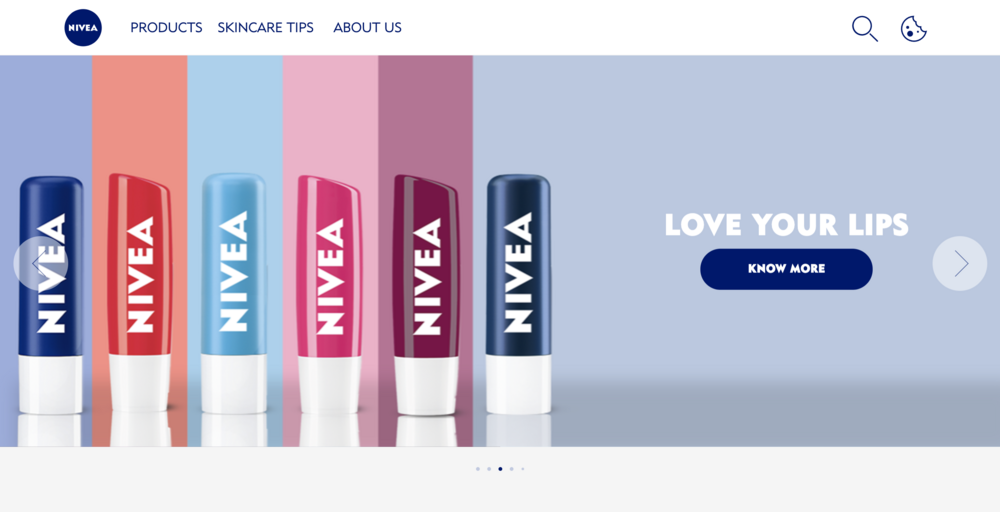A Startup’s Physical Location Matters Less Than Ever Before
Sep 17, 2020

By Ray Newal, Managing Director of Techstars Bangalore
We’ve all heard the adage: in real estate, what matters most is location, location, location.
Until recently, this was also true in the world of startups. Companies physically close to target customers, investors, talent pools, and potential acquirers enjoyed a substantial home-field advantage over international competitors.
But times have changed. It’s open season for the best talent in the world, many of whom are migrating away from large, expensive cities and no longer need or want to work in an elaborate HQ. Venture capitalists and the Limited Partners that fund them are now comfortable writing cheques without a single face to face meeting. And most importantly, customers of all sizes have adapted to researching purchase decisions and transacting virtually whenever the need arises.
So it should be easy to scale your business beyond the borders of your home country, right?
Not so fast…
The ability to win deals, close investments, and hire top talent across borders relies on an understanding and mastery of the concept of signalling to establish trust and comfort with those that you seek to win over.
In its simplest form, signalling incorporates cues such as messaging, brand, iconography, testimonials, associations, and other locally familiar references to establish emotions like confidence, security, inspiration, and comfort in the minds of those who need to buy into your business.
The cues that conjure these emotions erode the effectiveness when they become unfamiliar. Design, messaging, icons, brand associations, and customer testimonials might resonate with customers in Jakarta, Indonesia, but mean very little to customers in Dallas, Texas. Tastes, values, interests, language, and culture shape our perspectives of status and trustworthiness.
Whether or not the signals that you’re sending are intentional, signals are always being sent. But if they are not locally relevant, they could be signals that fail to create a perception of value.
As a general rule, humans place less value on things that don’t create an emotional connection. In the absence of an emotional connection, relationships become transactional in nature. Price becomes a race to the bottom. Human resources become a rotating door. With no reason to stick around if a better option presents itself, customer churn increases. As a whole, value drains out of the company.
So how does an international startup establish a familiar and trusted emotional connection with customers, investors, or employees across physical or cultural distances? Let’s break down some of the key steps:
01. Discover Your Edge
Why should local customers, investors, partners, employees care?

Freshworks, an Indian SAAS company, very clearly expresses their edge in a recent U.S.-targeted ad.
I’m not surprised when entrepreneurs pitch me on an international opportunity (in a foreign market) without an in-depth awareness of the local market, or the competitive edge they will use to win. I made this same mistake a decade ago when I building my first startup, focused on serving the Indian market from Toronto. It wasn’t until I moved to India that I realized my go-to-market strategy was completely flawed.
I can’t emphasize enough the importance of having a detailed, high-resolution view of the market that you seek to serve. It sounds obvious but getting an in-depth perspective of a new international market is often an afterthought when it should be considered before deciding to expand.
If you don’t understand local customers’ demands and the offerings available to them at a local level, how can you discover your competitive advantage? What will you bring to the market that rivals aren’t already offering? Conversely, once you determine your edge, use it to shape a narrative that you, colleagues, first customers, partners, and potential foreign investors can believe.
02. Get Local In Your Approach to Selling
See your customers through the eyes of local competitors. Learn the local language of business and the accepted approach to selling.
Once you understand the competition, examine their sales processes, and try to gain as much customer insight as possible. What are the emotions triggered by their websites, online ads, content, and other touchpoints? Examine the imagery used. What kind of society do they depict? This may not indicate the situation on the ground, but it will offer an idea of a society’s aspirations. How is the product or service priced? What calls to action do they use?
Set up a sales appointment as a potential customer, and go through the sales process in a customer’s shoes. Sign up for a trial and go through the on-boarding process. What commonalities do these approaches have? You’ll find clues that speak to their customers’ culture and values system. Your competitors’ ability to understand how to connect with their customers emotionally is implicit in communicating with them. You will need to be intentional about gaining an understanding of these connections.
03. Get the Messaging Right


iPhone 6S ads from the U.S. (left) and India (right). Note the subtly different headlines.
How can you tell if a company is not local? Review their websites, email communication, the presentations delivered, and the content created. The words used are usually different and the slang is unfamiliar. They could contain hyperbole (or, in some cases, not enough) and there could be obvious grammatical errors or misspelled words.
Imagine the experience of unboxing an electronic device and reading a manual that is apparently in English but makes no sense! Some companies simply translate copy that works in their native language to suit the new market’s purpose. In a startup world that honors the mantra of “move fast and break things,” we neglect to spend the time on little details. As a result, we lose the opportunity to make a significant positive impression on people interacting with your business for the first time.
04. Create Channel Strategy for Your Customers
Let customer knowledge and relationships guide your channel strategy, not the reverse.
It’s a common practice for B2B startups to retain the services of third-party contracted sales representatives or systems integrators when establishing a new geographic market. And on the surface, it seems like a great idea. Why not have someone knock on doors in a new market on your behalf? They speak the local language and may have relationships with your target customers. It’s often a mental relief that someone else will have the responsibility for selling your products or services in a new market.
But if you aren’t developing customer relationships directly, how can you be sure that you’re capturing the customer insights that matter? Talk to prospects, analysts, and influencers to better understand what motivates customers to look at a new solution, how and where they consume information, and who’s involved in making a purchase decision.
When expanding to a new market, it’s of higher importance that you know everything you can about your customers. Don’t make channel decisions that cut you out of these insights. The deeper that you know your customers, the sooner you will uncover insights that lead to proprietary channel strategies.
05. Align Your Digital Touch-Points With the Market
When moving into a new market, it is essential to identify the digital channels that customers use to discover new products and services. You need to ensure your company’s brand and value propositions are clear, create trust, and don’t feel foreign. Incorporate your market analysis from each of the points above to ensure you’re connecting with your customers in a highly emotive and impactful way.


Nivea's website promoting its line of Iip products in Nigeria (left) and Brazil (right).
A great first step before ‘launching’ in a new market is to establish a local advisory board of potential customers and mentors. Have them review your website, landing pages, localized advertising, and content to make sure you are using a design language and brand language consistent with local traditions and values.
06. Build Familiarity Through Association
To drive brand and product awareness, partners within a new market can play an important role. Partners with a strong market presence are an efficient way to create brand familiarity. Partnerships also make it easier and faster to gain an understanding of local markets and how customers make buying decisions.

Starbucks partnered with well known Indian brand Tata upon entering the Indian market.
The key to success is working with partners to create a win-win proposition. Ensure your product aligns with their business and strategic goals and, as important, delivers value on a long-term basis to their target audiences. You want to position your product as a critical part of their portfolio, so they are excited and motivated to drive sales.
07. Use Locally Relevant Stories, Testimonials, or Case Studies
This Airbnb India video ad translates their offering in a way that captures the fun of an Indian family holiday.
There is nothing more powerful than stories — e.g., testimonials, case studies — that feature local customers extolling your product’s benefits. These stories should be authentic and believable. Companies aspire to enjoy the same kind of success of companies like themselves, so marketing that reflects their needs, interests, and goals captures the spotlight. As you look to get a foothold in a new market, identify and engage local customers who see your product’s value. These are customers that can become evangelists and powerful advocates for your company.
08. Cultivate Your Local Fan/Influencer Base
In every market, there are influential people — analysts, media, etc. As part of your grassroots marketing efforts, identify, engage, and cultivate relationships with the potential to drive awareness and word of mouth. It is essential to understand the market’s dynamics, the key players, and how companies position themselves as trusted entities. Reach out to influencers who can jump-start your marketing and sales efforts via their credibility and connections.
09. Amplify Your Signal Using a Mixture of Accretive Marketing Investments
You understand your edge and your path to making an emotional connection with the customer. You’ve adapted your digital touchpoints using imagery, market-relevant messaging, and associations and testimonials. You know your customers well enough to have a perspective on the most effective channels and their respective CAC. You have relationships with partners and influencers that reinforce the value that you intend to bring to the local market. Now, it’s time to amplify your business to the market.
Treat your marketing spend as if it’s a venture capital fund. Place calculated investments of similar size in a portfolio of marketing campaigns and channels, and dedicate time to testing what works. Ensure you’re using marketing and sales creative that resonates locally. And then measure everything.
As you get an idea of the channel/creative combinations which yield the highest ROI, continue to invest in these channels. For SAAS businesses, be sure the revenue you generate over the lifetime of a customer (LTV) is a lot more than the cost of acquiring a customer (CAC). In this sense, your marketing investment should be accretive to the business as a whole. In general, you should be spending less than a third of LTV to acquire a customer. If the proportion is lower, this is great news because you need less capital to grow in your new market!
Expanding into new international markets can be exciting and challenging, and if you’ve developed a product that solves a significant problem for customers, you’ve already done a lot of hard work. But it doesn’t mean success is a sure thing.
With the nine steps listed above, you’ll be able to effectively communicate the value of your product or service in ways that resonate with customers in any international market.
If you’re a South Asian startup interested in fast-tracking your expansion into the North American market, I welcome you to apply to Techstars Bangalore’s 2021 program where 10 companies will have the chance to work with myself, our program manager Shipra Vinay, our CMO-in-Residence Mark Evans, and more than 80 mentors with experience building and scaling international businesses. Over 13 weeks, we will take an in-depth approach to help our companies learn how to master signalling strategies and techniques to build strong connections with potential customers, employees, partners, and investors.
This article originally appeared on Medium.
About the Author

Ray Newal
Ray Newal is a Canadian entrepreneur and early stage investor, currently serving as the Managing Director of Techstars India, located in Bangalore, India where he leads the Techstars Bangalore Accelerator, with a focus on emerging markets.
Before joining Techstars, Ray was cofounder and CEO of Jigsee Inc., a leading mobile video platform in India. Prior to Jigsee, Ray spent over a decade leading sales and business development at DoubleClick, MSN, and Yahoo.
